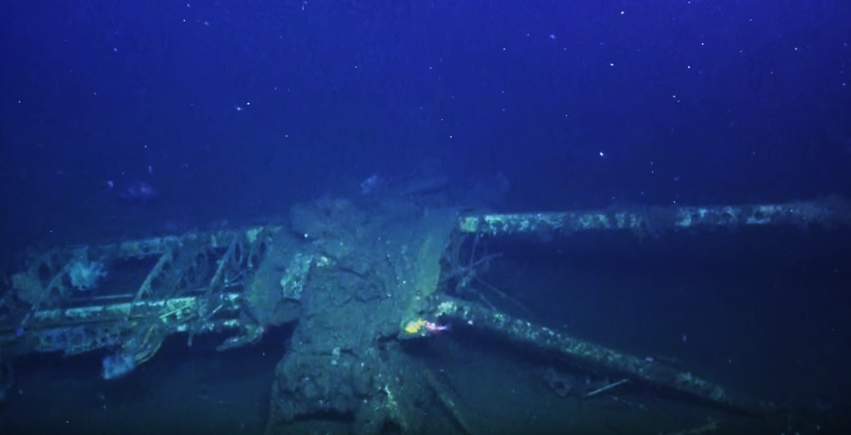Thanks to a legendary explorer and the Internet, the helium-powered USS Macon that crashed into the sea in 1935 can be explored by us all. (Footage below)
A helium-powered aircraft carrier
The USS Macon (ZRS-5) was a helium-powered Navy airship that was designed to carry biplanes, namely Curtiss Sparrowhawks and Fleet N2Y-1s. It was built in 1933 at the Goodyear Airdock in Springfield, Ohio and became the largest airship ever built in the United States.
The USS Macon was slightly shorter than the infamous, hydrogen-powered Hindenburg, but it still co-owns the record for the largest helium-powered airship ever made along with its sister ship, the USS Akron.
(The USS Akron crashed as well, one month before the Macon’s maiden voyage. With just 3 survivors, the Akron still holds the record for the most fatalities in any airship crash in history at 73. The most notorious airship crash, the Hindenburg, took the lives of 35 people out of the 97 onboard.)
The final flight of the USS Macon
After 50 flights, the helium-powered Macon ran into a storm off of California’s Big Sur coast on February 12, 1935, where strong winds caused a structural failure to a buckled rear girder ring that had not yet been repaired following a previous elevation incident over Texas.
As a result, the upper tail fin sheared off and punctured the rear helium cells, causing a leak. When the commander ordered a massive ballast drop to try to regain control, the USS Macon became unmanageable. One-by-one, the helium cells blew, and when enough gas escaped, the ship began to drop toward the Pacific Ocean.
After a gentle, 20-minute descent, the helium-powered airship settled onto the surface of the sea, ultimately sinking in what is now the Monterey Bay Sanctuary.
However, because of the USS Akron disaster, the Macon was equipped with life jackets and rafts, which helped save the lives of all but two crew members. (One jumped too soon and did not survive the fall, and the other drowned trying to swim to shore.)
Exploring the helium-powered USS Macon
On August 18, more than a quarter century after the Monterey Bay Aquarium Research Institute discovered the site, Dr. Robert Ballard (best known for finding the wreckage of the Titanic) and his Nautilus team deployed remote-controlled submersibles to locate and map what’s left of the USS Macon and its planes.
Here is some footage of what they found:
Sources: Nautiluslive.org, Wikipedia


